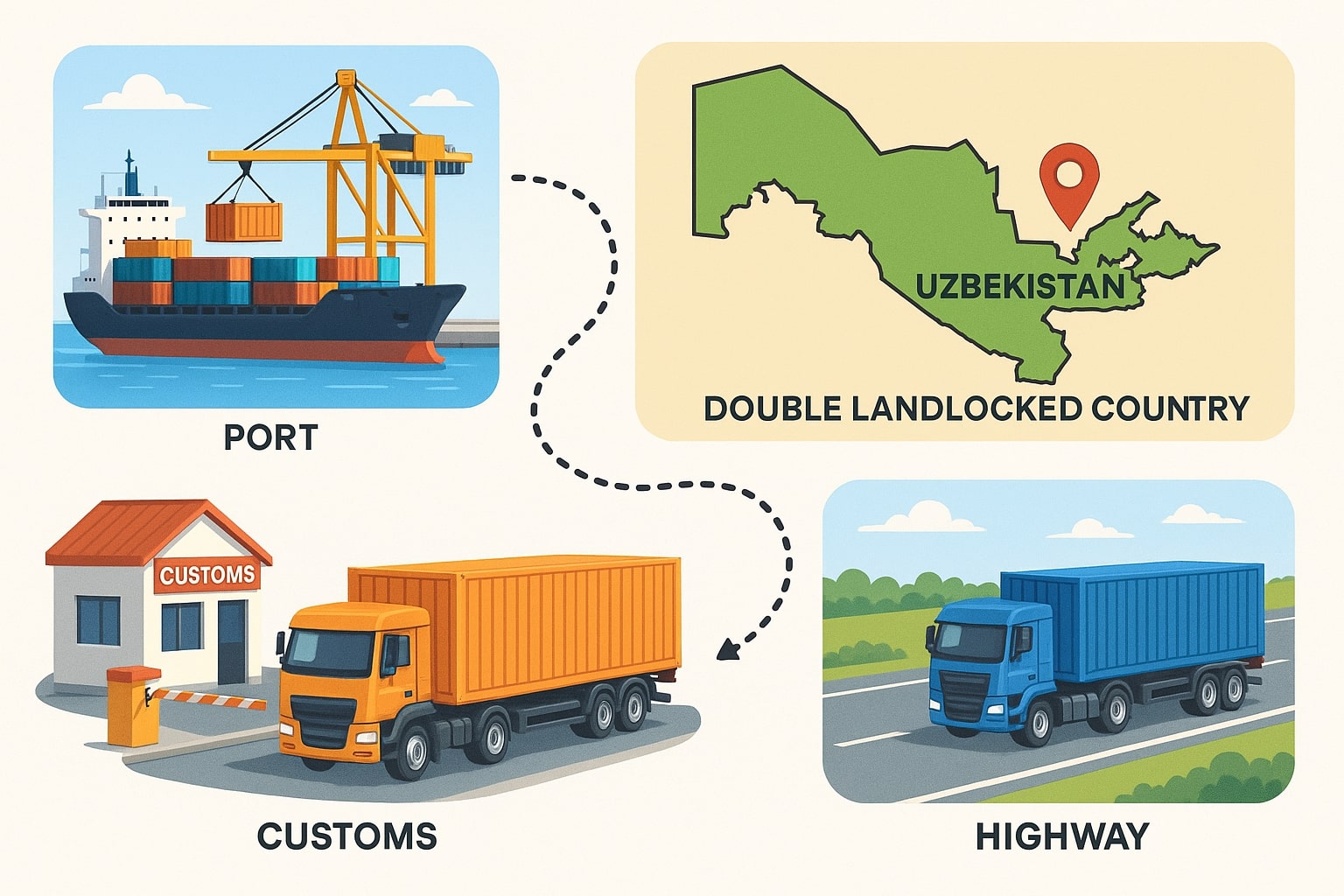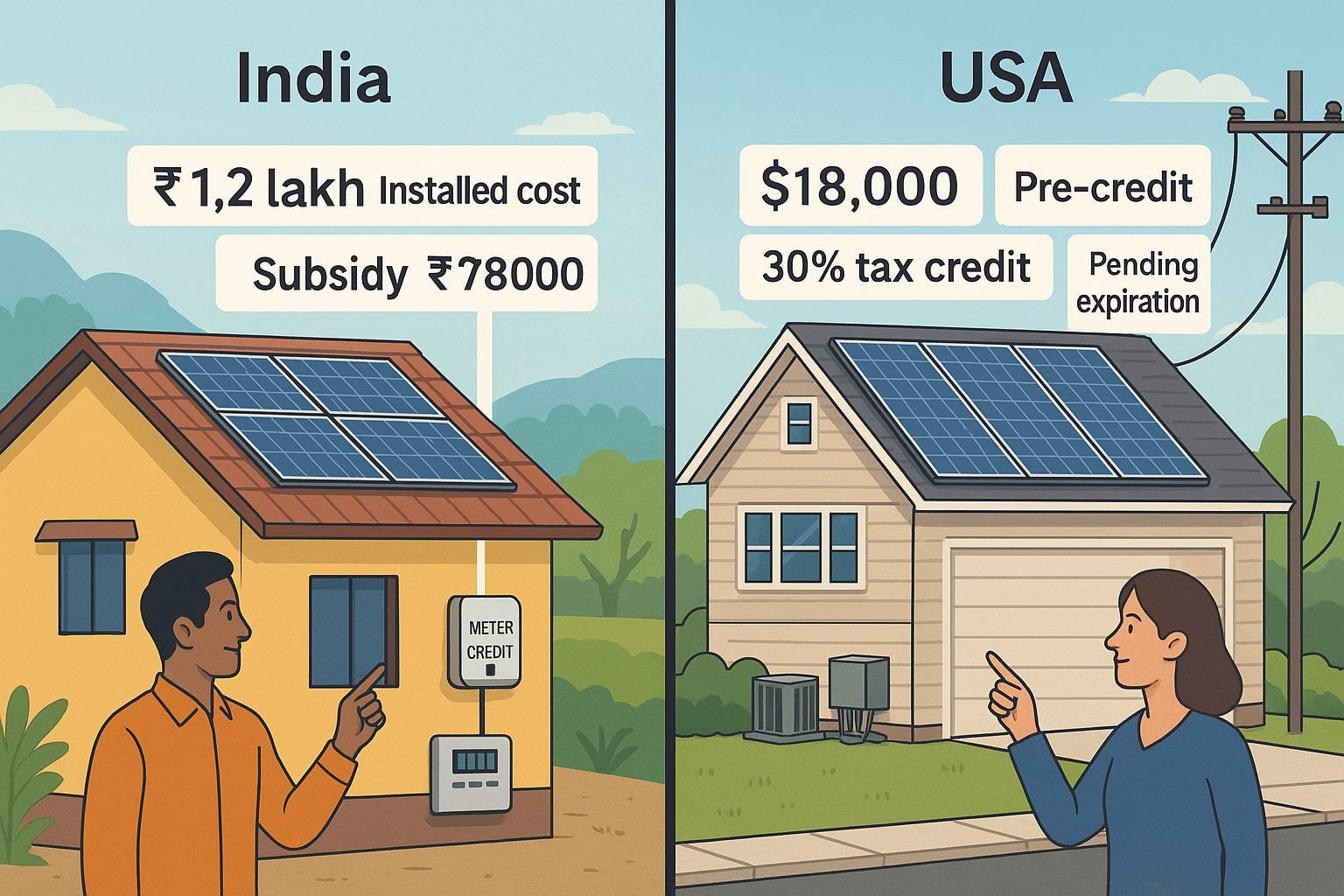Exporting to landlocked countries is nothing like shipping to a coastal nation. Since these countries don’t have direct access to the sea, they depend on neighboring countries’ ports for global trade. This means extra steps, more documentation, and higher costs.
In this post, I’ll explain the challenges of exporting to landlocked countries, the ports they rely on, and share my personal experience exporting to Uzbekistan—a double landlocked country.
What is a Landlocked Country?
A landlocked country is a country that has no coastline and no direct access to a sea or ocean. Since most global trade happens through sea routes, these countries must depend on neighboring countries for port access.
Currently, there are 44 landlocked countries in the world. Some of the major ones include:
- Nepal – Uses Kolkata Port (India)
- Bhutan – Uses Kolkata Port (India)
- Afghanistan – Uses Karachi Port (Pakistan) and Chabahar Port (Iran)
- Ethiopia – Uses Djibouti Port (Djibouti)
- Bolivia – Uses Port of Arica (Chile) and Port of Ilo (Peru)
- Kazakhstan – Uses Port of Aktau (Caspian Sea) for regional trade and ports in Russia
- Mali – Uses Port of Dakar (Senegal)
- Zambia – Uses Durban Port (South Africa) and Dar es Salaam (Tanzania)
What is a Double Landlocked Country?
A double landlocked country is surrounded entirely by other landlocked countries, meaning goods must pass through at least two countries to reach a seaport.
There are only two double landlocked countries in the world:
- Uzbekistan (Central Asia)
- Liechtenstein (Europe)
My Experience Exporting to a Double Landlocked Country – Uzbekistan
Exporting to Uzbekistan was a real learning curve for me. It was my second export consignment overall and my first time exporting to a landlocked country. Honestly, I had no idea how it worked at first.
Thankfully, my importer was very cooperative and explained the steps. I also found a helpful freight forwarder and CHA who guided me through the process.
Here’s what happened:
- I exported black tea to a CIS country (Uzbekistan).
- Since Uzbekistan has no port, my goods were shipped to Bandar Abbas Port (Iran).
- From there, the importer’s agent handled customs clearance and moved the cargo by truck to Uzbekistan.
Challenges I Faced
- Very Long Transit Time
From Kolkata Port to Bandar Abbas took 30–35 days, plus extra delays in customs and transshipment. The full journey took around 45–50 days. - Transshipment Hassles
Multiple border crossings and customs checks caused delays. - Importer Frustration
My importer was sometimes upset with the slow delivery, which I couldn’t fully control. - Higher Costs
Multiple legs of transport mean more expenses compared to direct shipping.
Common Challenges When Exporting to Landlocked Countries
- Longer Delivery Times: Multiple borders and transshipments.
- Complex Documentation: Transit permits for each country en route.
- High Costs: Land freight is expensive, and so is handling at multiple points.
- Dependence on Neighboring Countries: Political or logistical issues can cause unexpected delays.
Tips for Exporting to Landlocked Countries
- Work with Experienced Freight Forwarders & CHAs: They can handle the tricky paperwork.
- Maintain Clear Communication: Set realistic expectations with your importer.
- Learn Transit Rules: Every country on the route has its own regulations.
- Plan for Extra Time: Always allow a buffer. Delays are common.
✅ Frequently Asked Questions (FAQ)
1. How many landlocked countries are there in the world?
There are 44 landlocked countries globally. They are spread across Africa, Asia, Europe, and South America.
2. Which are the two double landlocked countries in the world?
The two double landlocked countries are:
- Uzbekistan (Central Asia)
- Liechtenstein (Europe)
3. Which ports do landlocked countries use?
Landlocked countries rely on ports in neighboring coastal countries. For example:
- Nepal & Bhutan → Kolkata Port (India)
- Afghanistan → Karachi Port (Pakistan) and Chabahar Port (Iran)
- Ethiopia → Djibouti Port (Djibouti)
- Bolivia → Port of Arica (Chile) and Port of Ilo (Peru)
4. What is the biggest challenge when trading with landlocked countries?
The biggest challenge is long transit times and higher costs because goods must travel across multiple borders and through transshipment hubs.
5. How can I make exporting to landlocked countries easier?
Work with experienced freight forwarders and CHAs, understand the transit process, and maintain clear communication with your importer about timelines and costs.




